-
 +73 +1
+73 +1Revamped Bubble Wrap no longer pop-able
Bubble Wrap, the packaging material popular with shippers and toddlers alike, is losing its pop. Sealed Air Corp. SEE, -0.46% the original seller of Bubble Wrap since 1960, is rolling out a revamped version of its signature product. Dubbed iBubble Wrap, the new packaging is sold in flat plastic sheets that the shipper fills with air using a custom-made pump. The inflated bubbles look much like traditional Bubble Wrap, with one key difference: They don’t burst when pressure is applied.
-
 +27 +1
+27 +1New centimeter-accurate GPS system could transform virtual reality and mobile devices
Researchers in the Cockrell School of Engineering at The University of Texas at Austin have developed a centimeter-accurate GPS-based positioning system that could revolutionize geolocation on virtual reality headsets, cellphones and other technologies, making global positioning and orientation far more precise than what is currently available on a mobile device.
-
 +13 +1
+13 +1Boeing just patented a jet engine powered by lasers and nuclear explosions
The US Patent and Trademark Office approved an application from Boeing for a laser- and nuclear-driven jet engine.
-
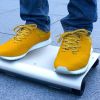 +26 +1
+26 +1Japanese mini Segway "WalkCar"
Can you remember the Segway? And how we all thought of it as the new way of human transportation? Sadly, it hasn’t come to life mainly due tothe device being quite big and stodgy; and a big minus – too expensive. Enter the WalkCar. Now a Japanese engineer, Kuniako Saito presents you a new, tiny personal transportation system - WalkCar. It is small enough to fit right in your backpack! You can just take it out of your backpack, step on it and wush!
-
 +25 +1
+25 +1An Interview with Selfie Stick Inventor Wayne Fromm
Wayne Fromm is a Canadian inventor who’s widely recognized as being one of the main inventors of the selfie stick (with the other being Hiroshi Ueda of Japan). Fromm holds original patents for selfie sticks created for compact cameras and smartphones, and he current sells selfie sticks through his Quik Pod brand. In this interview, we spoke to him about his involvement in (and thoughts about) the selfie stick boom...
-
 +25 +1
+25 +1Will Google Kill 'The Fat Man'?
You're walking alone along a trolley track when you see five people tied to it further in the distance. You suddenly hear the distinctive horn of a trolley from behind you, the panicky pace of the blasts sending warning that this train's a runaway. Unless you do something, the five people in front of you will be killed. Good news: You are near a switch that will allow you to divert the train before it hits them. Bad news: On the other track, there's a single person, also tied to the track.
-
 +47 +1
+47 +1An MIT battery breakthrough could charge your smartphone in 6 minutes
The smartphone batteries of the future may take just six minutes to charge and could last for three whole days.
-
 +41 +1
+41 +1This Color Changing Helmet Material Could Help Detect Concussions
A new helmet material that visually indicates how severe an impact is could help soldiers and athletes get quicker, better brain trauma diagnoses. The material, developed by a team of researchers at the University of Pennsylvania, changes color only when hit with a powerful, quick force. When hit with 30 millinewtons of force the material changes color from red to green. When struck with 90 millinewtons, it turns purple.
-
 +17 +1
+17 +1Rap Athenas: From Juvenile's "Ha" to A$AP Rocky's "Peso"
The first time I saw the videos for Juvenile’s “Ha” (1998) and A$AP Rocky’s “Peso” (2011), I felt I was witnessing the birth of something full-grown, wrapped in tattoos, front teeth full of jewels, wrought in an aesthetic emerging organically out of a world and a worldview both foreign and familiar.
-
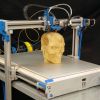 +16 +1
+16 +1What's at 'the peak of inflated expectations' now?
Three years ago, every website was covering consumer 3-D printing. The trend was at “the peak of inflated expectations” a term coined by IT consulting firm Gartner in its famous Hype Cycle graph. It's basically the point where everyone agrees it's the Biggest Thing Ever. This is inevitably followed by the Trough of Disillusionment, when people discover the technology isn't as fabulous or world-changing (or as ready for use) as they thought. But what follows — and doesn’t get the attention...
-
 +22 +1
+22 +1A question of utility
The Great Exhibition, staged in London in 1851, was intended to show off the inventive genius of Victorian Britain. In doing so it sparked a hardfought debate on intellectual property. On one side were public figures horrified at the thought of inviting the whole world to see the nation’s best ideas, only to have most of it go straight home and copy them.
-
 +18 +1
+18 +1Creative destruction: From Luddites and taxi drivers to the entire human species.
Economic repercussions of innovation. The year is 1811, on the eve of the Industrial Revolution, in the south of the region called Nottinghamshire in England, an elite group of craftsmen see their communities threatened by a combination of machines and new practices that had been imposed by the aggressive new class of manufacturers driving the Industrial Revolution. The factory system, with its vast mills and steam-powered looms had replaced them slowly but steadily...
-
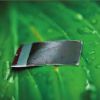 +32 +1
+32 +1Device That Makes Hydrogen Fuel from Sunlight and Water
A new prototype that turns the sun’s energy into hydrogen fuel could point the way to commercially viable artificial photosynthesis. Fuel made inexpensively through artificial photosynthesis could be the ultimate renewable energy source. Now researchers at Caltech say they have built the first prototype of an artificial leaf that is both efficient and safe. They say the device, which uses light and water to make clean hydrogen fuel, could lead to a commercially viable version in the near future.
-
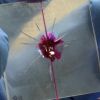 0 +1
0 +1NASA’s self-healing material can take bullets
NASA’s coolest discovery yet might not be in outer space, but right here on Earth. The space agency has found a new material with the ability to self heal from a bullet wound in just two seconds. While they might not be able to recreate the Terminator just yet, the discovery could have applications for everything from repairing spaceships to creating ‘self-healing’ military equipment.
-
 +65 +1
+65 +1Construction of world's first large-scale vegetable 'factory' underway
Japanese vertical farmer, Spread Co., has begun construction on what it called the world’s first large-scale vegetable factory. The facility will be fully automated from the seeding process to harvesting and be capable of producing 30,000 heads of lettuce per day. The company currently operates a facility in the city of Kameoka that uses artifical lighting and vertical farming techniques to produce four different types of lettuce...
-
 +20 +1
+20 +1Facebook’s New Spam-Killer Hints at the Future of Coding
Louis Brandy pauses before answering, needing some extra time to choose his words. “I’m going to get in so much trouble,” he says. The question, you see, touches on an eternally controversial topic: the future of computer programming languages. Brandy is a software engineer at Facebook, and alongside a team of other Facebookers, he spent the last two years rebuilding the system that removes spam—malicious, offensive...
-
 +23 +1
+23 +1Amazon, Netflix, Google, Microsoft, Mozilla And Others Partner To Create Next-Gen Video Format
Amazon, Cisco, Google, Intel, Microsoft, Mozilla and Netflix today announced that they have formed a new open source alliance — the Alliance for Open Media — with the goal of developing the next generation of royalty-free video formats, codecs and other related technologies. It’s not often we see these rival companies come together to build a new technology together, but the members argue that this kind of alliance...
-
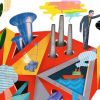 +19 +1
+19 +1What Searchable Speech Will Do To You
We are going to start recording and automatically transcribing most of what we say. Instead of evaporating into memory, words spoken aloud will calcify as text, into a Record that will be referenced, searched, and mined. It will happen by our standard combination of willing and allowing. It will happen because it can. It will happen sooner than we think. It will make incredible things possible. Think of all the reasons that you search through your email.
-
 +15 +1
+15 +1Inside Facebook's plan to build a better school
Looking back, Mike Sego says, he was always meant to work in education. His dad taught fifth grade for 37 years, three of his older siblings were K-12 teachers, and he spent free time as a kid grading papers for fun. But like so many people who arrive in Silicon Valley after college, Sego first started working in tech. He worked on The Sims, and later got to know Mark Zuckerberg when his virtual pets game, (fluff)Friends, was one of the first...
-
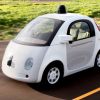 +21 +1
+21 +1Laser Breakthrough Could Speed the Rise of Self-Driving Cars
The eyes of a self-driving car are called LIDAR sensors. LIDAR is a portmanteau of “light” and “radar.” In essence, these sensors monitor their surroundings by shining a light on an object and measuring the time needed for it to bounce back. They work well enough, but they aren’t without their drawbacks. Today’s self-driving cars typically use LIDARs that are quite large and expensive. Google, for instance, used $80,000 LIDARs with its early designs.
Submit a link
Start a discussion




















